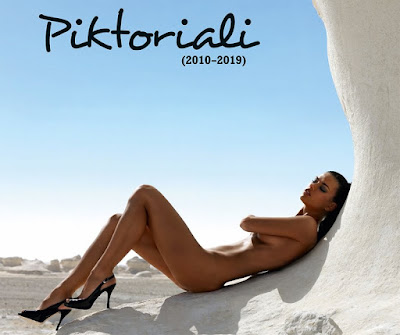HOW I SHOT GRAZIA FASHION MAGAZINE COVER WITH A SMARTPHONE
After Sports Illustrated did it with with
The Rock, Billboard with Camila Cabello, Condé Nast Traveler, Bon Appetit and Time Magazine
with their awesome editorial shots, I felt the irresistible urge to try it out
myself. It was time to put my latest smartphone sensor to the ultimate quality
test - shooting an international glossy
fashion magazine cover. Grazia, the
Italy-based Mondadori women's magazine, first published in 1938 and now
franchised in 23 countries worldwide (from Albania to Mexico, Pakistan and
Thailand) had contacted me with the cover idea as I shot for them before.
I explained
to Grazia Slovenia editor-in-chief Špela Štamol that I wanted to shoot the
cover with the latest model of Huawei Smartphone. I made a list of all of the
specs that make the camera and three Leica lenses on the Huawei P10 plus better
than any of its earlier incarnations and realized that the strict quality
Grazia maintains on its covers (each international cover still has to be
individually approved by Mondadori Headquarters in Italy) just
wouldn’t have been possible with any Huawei smartphone before P10 Plus. Mind
you that this is not the first magazine
cover shot with a Huawei smartphone - the credit goes to an Egyptian
photographer and his work for Insight Magazine using Huawei P8.
The smartphone
is about as capable of capturing a good picture as most basic
compact cameras on the market. It is still no substitute for a
multi-thousand-dollar DSLRs, especially in print, but with the right lighting
and proper post-production, your phone’s camera can definitely hold its own. The vast majority of people (98%) will never
notice the difference at all.
Let me explain my love for the Leica optics first. In 1914
optical engineer Oskar Barnack was working for Ernst Leitz when he designed the
very first Leica, the Leitz Camera, or so-called Ur-Leica. The small handheld
camera, one of the first to use 35mm film, finally went into production in 1925
following a long delay caused by World War One. It went on to revolutionise photography
in the hands of the first photojournalists who set out to record the world on
the brink of change. My dad gave me his Leica III when I was 11 years old. It
changed the way I saw things completely. Today the name Leica still stands as a
benchmark for the ultimate optical quality and the Huawei P10 Plus proudly sports
three Leica lenses integrated in its body.
Nina Pušlar,
Huawei ambassador and the star of their latest international campaign, is one
of the most popular Slovenian singer-songwriters. She was a logical choice for the
cover. The smartphone allows for ease of use in the sense that it’s smaller and
creates a more casual feel when shooting, which proved especially cool when
working with a young star such as Nina Pušlar. Because of her age, the
generation she’s grown up with uses a smartphone as an everyday photography
tool.
The final
photos were of course touched up with photo editing software (that’s normal for
the course of all types of photo shoots, even those involving the most
expensive camera equipment), but not more than just simple curves for contrast,
clone tool for some imperfections and stray hair and extra grain to eliminate
the "digital look". The Portrait mode on Huawei P10 Plus makes all
the skin beautifications in camera and you can even choose a virtual
depth-of-field effect where the subject is brought into perfect focus while the
background is then blurred with a simulated f-stop that goes as low as f/0.95,
adding a beautiful bokeh to your
portrait photos.
I usually
rely on high-level professional equipment, such as a medium format camera or a
Canon 5DSR, supplemented by a high-end lighting system. The big, 50 megapixel
files allow for some level of cropping, but the tiny, fragile smartphone sensor
unfortunately does not. I had to spend more time on composition and the final
photos were more thought out images than casual snapshots. Working with the
phone actually slows you down a notch, which in photography is always a good
thing.
Professional
photographers do not need to feel threatened by the way smartphones put a
powerful camera in everyone’s hands. It is just a welcome tool to elevate the
game and bring out the individual creativity. We always have to be pushing and
evolving, finding new ways and going along with new technology, whatever it may
be, to create something pioneering.
Check out the final editorial
images in Grazia Slovenia June 2017 edition, all shot on Huawei P10 Plus.
Author’s note: At the time of shooting the editorial images I was associated with Huawei as their brand ambassador. The initiative of shooting the magazine cover and editorial images with their smartphone was mine.
Author’s note: At the time of shooting the editorial images I was associated with Huawei as their brand ambassador. The initiative of shooting the magazine cover and editorial images with their smartphone was mine.






